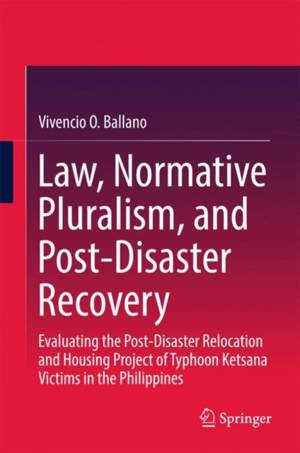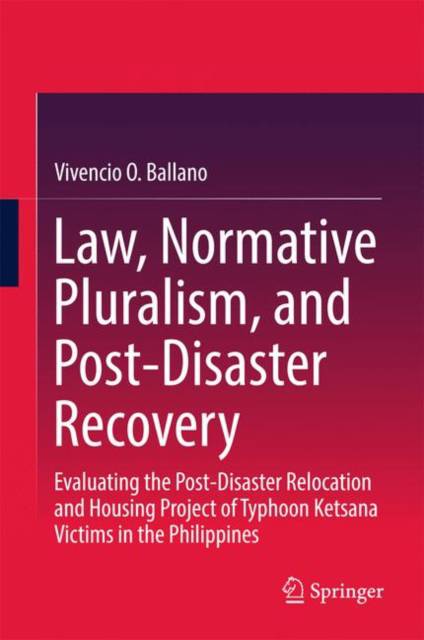
- Retrait gratuit dans votre magasin Club
- 7.000.000 titres dans notre catalogue
- Payer en toute sécurité
- Toujours un magasin près de chez vous
- Retrait gratuit dans votre magasin Club
- 7.000.0000 titres dans notre catalogue
- Payer en toute sécurité
- Toujours un magasin près de chez vous
Law, Normative Pluralism, and Post-Disaster Recovery
Evaluating the Post-Disaster Relocation and Housing Project of Typhoon Ketsana Victims in the Philippines
Vivencio O Ballano
Livre relié | Anglais
111,95 €
+ 223 points
Format
Description
Applies the legal and normative pluralist perspectives in the field of post-disaster management
Provides an overview of the complexity and rigidity of the Philippine real-estate regulation and post-disaster relocation system
Reveals the inadequacy of the Philippine Disaster Risk Reduction Act of 2010 in dealing with post-disaster recovery
Highlights the need for regulation of the informal and cultural normative systems for the success of government-sponsored housing projects
Spécifications
Parties prenantes
- Auteur(s) :
- Editeur:
Contenu
- Nombre de pages :
- 173
- Langue:
- Anglais
Caractéristiques
- EAN:
- 9789811050732
- Date de parution :
- 02-10-17
- Format:
- Livre relié
- Format numérique:
- Genaaid
- Dimensions :
- 156 mm x 234 mm
- Poids :
- 439 g

Les avis
Nous publions uniquement les avis qui respectent les conditions requises. Consultez nos conditions pour les avis.






